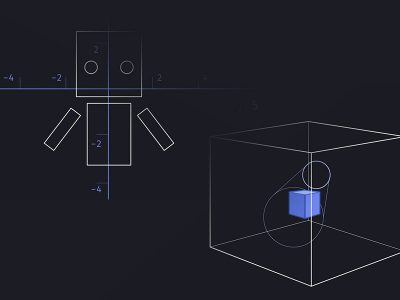
From our sponsor: Leverage AI for dynamic, custom website builds with ease.
For a lot of designers constraints are kryptonite or a barbed wire fence that is a prison for their design freedom. But design constraints shouldn’t be viewed as problems to be overcome, rather, constraints or restrictions are probably the best tool for creativity. Constraints are good: they give you direction and they challenge you to be better. Constraints force you to try new things and to experiment more.
Victor Hugo said “Necessity is the mother of all invention” and he is right, we invent stuff to solve problems. Invention and creativity go hand in hand, without creativity nothing would be invented. In design, constraints create necessity and their sole purpose is to challenge our very creativity and make us examine design in different ways.
What is the Kryptonite?
Restrictions vary widely from design project to design project and each project may have their own very specific set of constraints that you have to deal with. As web designers there are some basic constraints that rear their ugly heads on almost every project we take on:
- Project deadlines – timelines
- Technological restrictions: languages, browsers, screen sizes, hardware speeds, etc.
- Software restrictions
- Client preferences/bias
- Client style guides and brands
- Customer needs: goals, expectations, knowledge
- Your own bias and personal preference
- Your own lack of knowledge/education
These are not inherently bad things. Learning to embrace and work with these things will make you a better designer. This list of constraints will allow you push yourself in a more creative way because you are forced to resolve them, you are forced to figure out how to resolve issues in different ways. It feels like as the web grows we have more constraints than ever, this may or may not be true, but embracing these constraints will allow you to move forward in a more creative and constructive way.
Too much freedom is a bad thing

Freedom in design is a great thing, it allows us to explore new ideas and to test uncharted waters. However, when you explore too much you tend to get lost. Constraints give you direction, they are essentially your compass through the design process. We put fences around cow pastures so that the cows don’t wander off onto a busy highway and get hit by a car. When you wander aimlessly through the design forest you will lose site of your design goals, get lost wasting time experimenting on ideas or concepts that have to relate to the project, then get hit by the “reality” car.
Restrictions and constraints allow us to stay focused and on task and when we stay on task we create better, more focused designs. The ‘fence’ of design allows (and sometimes even forces) us to:
- Focus on the purpose
- Examine the design more closely
- Make decisions quicker and easier
- Focus time on important aspects of the design
Challenge yourself – learn to be creative

Design is a challenging profession. You’re expected to just be creative, you’re expected to come up with really awesome, super creative visual representations of ideas that users will enjoy… all off the top of your head. Now, we all know this just isn’t true, so how do you become more creative? Do you doodle on every piece of paper you see? Do you take an acrylics class at the local community college? Do you get subscription to some inspirational design magazine? You could, and these may all help to stir up your creative juices. But the most effective and quickest way to be creative is to impose your own constraints.
Next time you start another web design project write down a few of your own constraints and challenge yourself. They don’t have to be huge constraints — after all, you already have all of those restrictions we talked about earlier. Just create a few different restrictions and challenge yourself to overcome them.
Here is a little list of self imposed restrictions I have used when designing websites:
- The only images you can use is the logo and inline content images
- Design a site using only standard web fonts
- You can only use Illustrator (I’m way to comfortable with Photoshop)
When I’ve challenged myself with a few self imposed restrictions I have been able to quickly step out of my comfort zone and try to think of new, more creative ways to solve problems. In the process I’ve discovered new CSS selectors, new design tools and new ways of solving design problems that I have later in other projects.
Constraints are just needs
Creativity is born out of necessity and constraints are just needs. Rather than looking at constraints and restrictions as horrible plagues on your creative freedom, embrace their challenge. Quit sitting at your desk like a zombie doing the same thing over and over again. Give these constraints a big ol’ hug and squeeze the creativity out of them.





You forgot the “wife constraint”, Patrick… “just get the bloody site finished so you get paid and I can go shopping!”
Nice article, i agree with your idea.
Yes.. is true !
Hey Patric! Good article as other ones. I like especially paragraf about “self imposed restrictions”. It shows that doing whole design like “layout” in Adobe Phtoshop is miserable. Best designers thinking about simplicity. The sites should be simple not heavy. In this case, using Cufon or Typeface should be denied – use default fonts to show people, that you are thinking about them. Thanks!
I like ‘Challenging yourself’ part the most. You have good experience. This article gives me a new way of taking my visualization.
Thanks
Great article. I definitely agree with many of the points you raise.
Stepping out of my design comfort zone is something I don’t do very often and I tend to stick to what I know.
I like the idea of trying to design a site only using Illustrator. I have never taken the time to learn it and I think forcing myself to do it using your methods is one of the best ways to go about it.
Thanks for all the great comments!
@Michael Przeprowadzki – I have actually enjoyed working with the basic web fonts lately, I’ve been spicing them up using CSS and I’ve been amazed at how far you can take Arial.
@George Wood – Ya, I still haven’t dared to design a website in Illustrator yet… I always start and then get scared off, I guess I should take my own words of advise 🙂
@Brian Kraemer-Banks – Agree.
Weird, was just talking about this same thing with a friend and saw this.